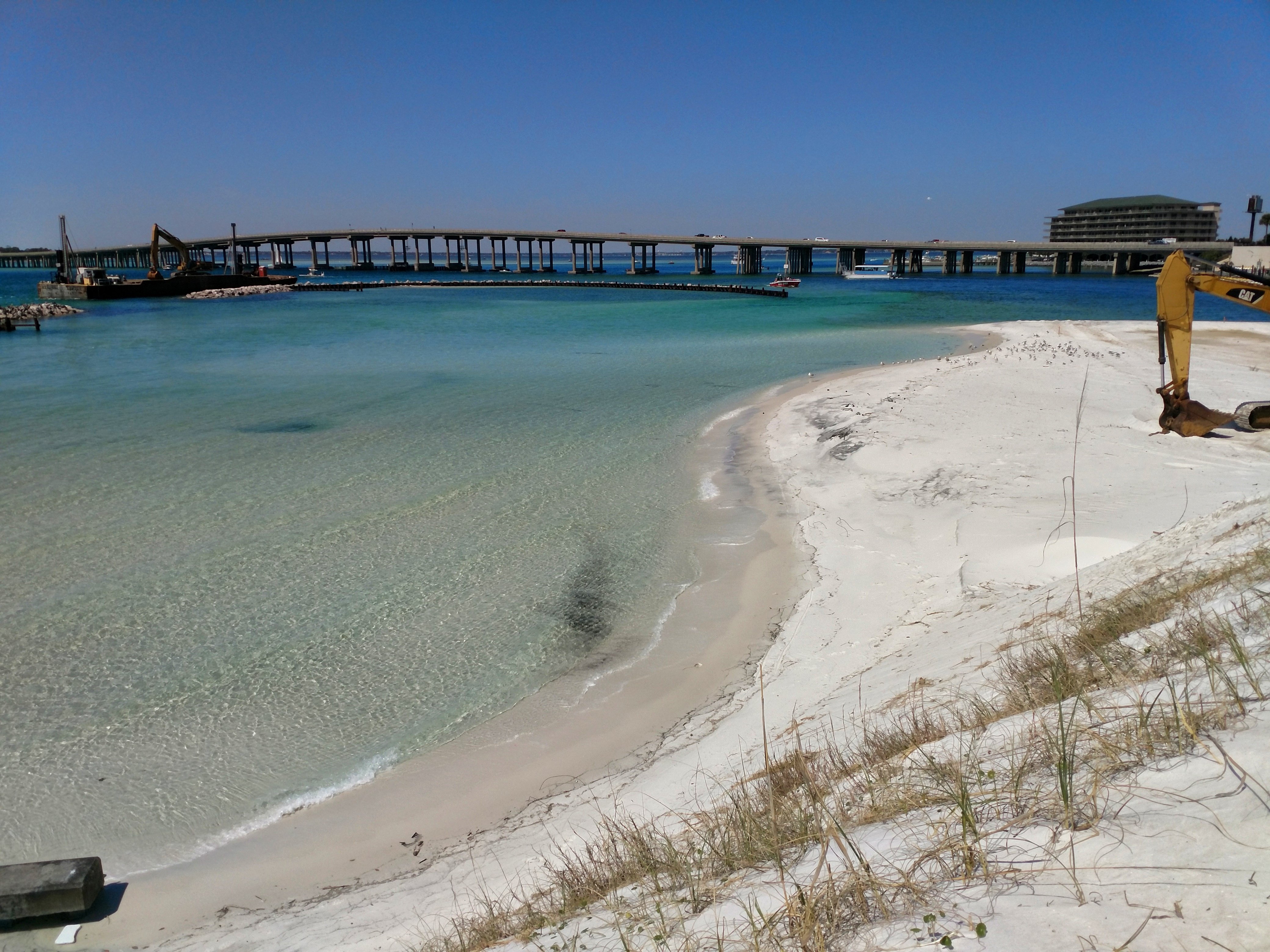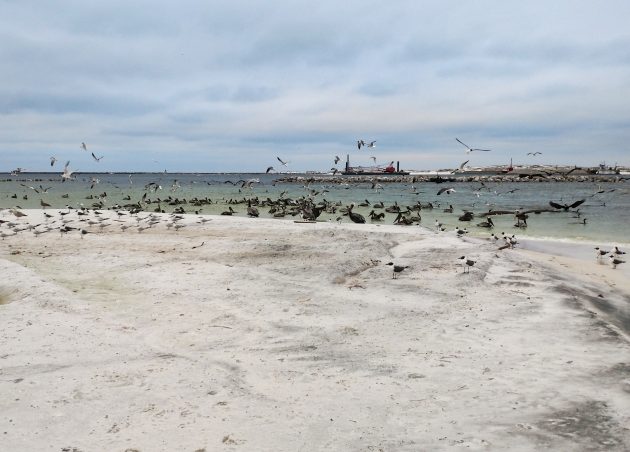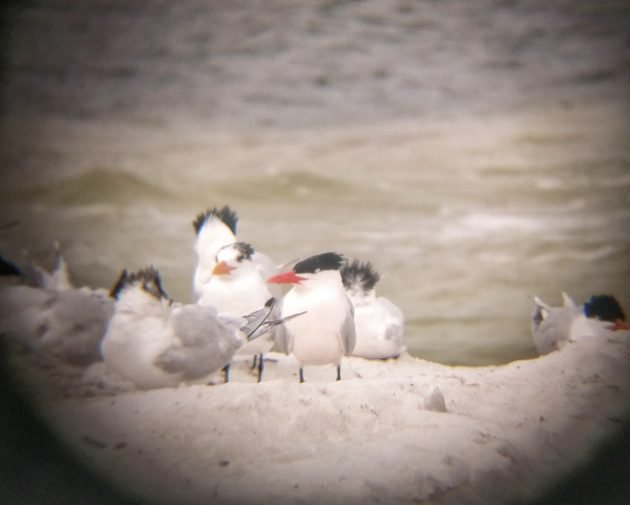
If you’re like me, searching for new birding locations is like a drug: exciting, energizing, and addicting. But, as I’ve written before, there are deep rewards when birding a location frequently. Good thing, because I have birded Norriego Point for nearly 50 days straight, and will continue to do so with few exceptions until the middle of May.
Norriego Point is a sandy, dune dominated peninsula between Destin Harbor and East Pass, which in turn connects the Gulf of Mexico to Northwest Florida’s Choctawhatchee Bay. As part of a stabilization and park construction project, I act as bird monitor, prowling the shoreline and hills looking for nesting birds and reporting on the range of species utilizing the site.
Every. Day.
My visits to Norriego Point are not my first sequence of daily expeditions. When I was 23 and just learning to bird, I spent a summer living in Virginia Beach with my boyfriend Brian (now husband). Officially, I devoted the summer to preparations for graduate school and finishing pre-requisite classes… but I had a lot of free time. Luckily for me, just down the road began a thin trail bordering the Lynnhaven Marsh. With trees and brackish ponds on one side, productive wetlands on the other, I had a ton of new birds to learn.

So while Brian worked I headed out in the oppressive heat each and every day, carrying my camera to take pictures of the species I then checked in my Sibley Guide back at his house. I saw egrets and herons and terns, Eastern Towhees and Blue-gray Gnatcatchers. I startled my very first White Ibis, which remains one of my favorite birds no matter how common they are in my new home state of Florida. Interestingly, the marsh and path felt friendly to me as the weeks rolled by, like an acquaintance growing into a deep connection.
That’s how I have begun to feel about Norriego Point, only I arrive every morning or afternoon not just because I like to bird, but because I am on contract. Regardless of how packed my schedule becomes, I have to head out to Destin (actually, I do have a sub if I need her, which averages out to about once a week. But that doesn’t sound as dramatic, does it?).
For example, a small group of Red-breasted Mergansers have become nearly constant companions during my circular walks. They swim in the shallows looking for meals, or tuck heads beneath wings along the sand. The males are especially dramatic, red eyes set against jet-black facial feathers, always spritzed up into a mohawk. For a few weeks, the same female Bufflehead paddled in slow circles within a half-moon embankment before migrating north once more. Brown Pelicans, Double-crested Cormorants, Great Blue Herons, Laughing Gulls, and Royal Terns remain standby sightings, but all of a sudden Bonaparte’s Gulls arrived, never flocking in great numbers but always present.

When it’s too windy for my camera I resort to the cell-phone-through-the-binoculars trick.
Rare visitors pop up like fireworks, attracting my attention before melting back into the larger landscape. One morning I discovered a Wilson’s Plover running along the edge of the harbor, but gone the very next morning. A pair of Sandwich Terns – weirdly stained a dull pink – stand amidst the Royal Terns, here one day and absent the next.
And I remain waiting. Black Skimmers have arrived, and soon the Least Terns will descend in noisy traveling teams as they move in to nest in the nearby dunes on Okaloosa Island and neighboring areas of Destin. I keep a running list, ready to add new species to the overall tally!











Can we do birding tour with you, between Nov. 2-7, 2019? How much does it cost?